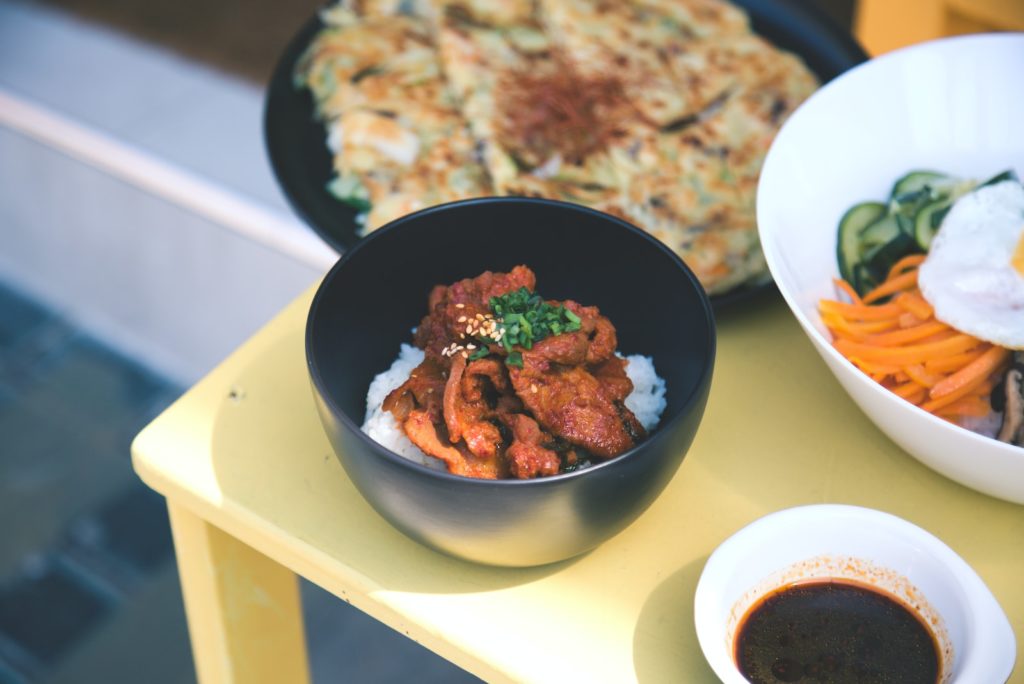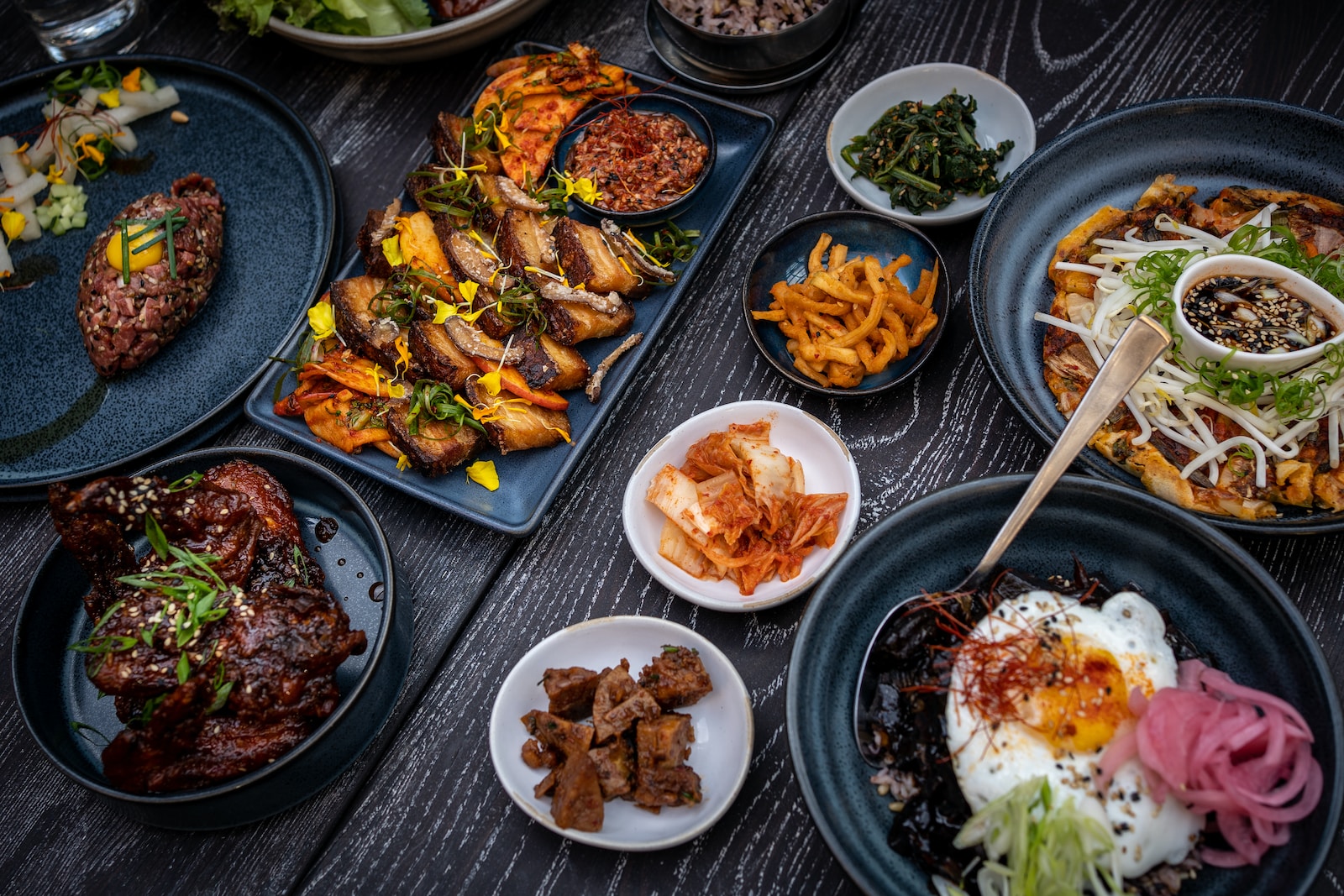Traveling is as much about indulging in local delicacies as it is about exploring new places. Stepping into a different culinary world offers a taste of unique flavors and traditions far removed from our own. It’s an adventure that sometimes starts right at the bottom of a plate.
So, let’s embark on a journey to the Far East, specifically South Korea, to uncover the treasures of its cuisine.
A Cuisine that Embraces Spices and Sauces
For many Europeans, the cuisine of the Far East represents a dive into an entirely different world. South Korean cuisine is no exception.
This cuisine is rich and diverse, reflecting the country’s history and culture, along with various influences it has absorbed over the centuries. It predominantly features ingredients such as rice (a staple), vegetables like cabbages, onions, mushrooms, and carrots, and to a lesser extent, meat, fish, and seafood. Spices, particularly chili, and a variety of sauces are also integral to Korean cooking.
In terms of traditional meals, rice and soup hold their ground, and it’s customary to accompany main dishes with an assortment of mini appetizers (banchans) served in small bowls. Tea is a common beverage of choice.
Whether dining in restaurants or enjoying homemade meals, street food kiosks are also widespread in Korea, offering an array of local delights that have garnered their own following.

Dishes, Desserts, and Drinks
The Dishes
- Kimchi: The national dish, served with almost every meal. It consists of fermented, spicy, and sour cabbage or radish.
- Bibimbap: A mixed rice dish with vegetables, meat or shrimp, and a fried egg on top.
- Banchan: Almost ubiquitous, these are small appetizers that precede or accompany the main course.
- Naengmyeon: A cold noodle soup with slices of cucumber and Korean pear, an egg, and sometimes meat, served in a broth with vinegar, spicy sauce, sugar, and ice cubes. Refreshing and perfect for summer!
- Guk: A soup that can be made with seaweed, chili peppers, soybean paste, or other ingredients.
- Jeon: A fried pancake with various toppings, somewhat akin to pizza, served with a mixture of soy sauce and vinaigrette. Delicious!
- Bulgogi: Thinly sliced, marinated beef barbecue wrapped in lettuce leaves.
- Mandu: Steamed or fried dumplings filled with meat, vegetables, or tofu.
- Japchae: A dish made with glass noodles, a few vegetables, and thinly sliced beef, all stir-fried in a sauce.
- Yangnyeom Chicken: Available in restaurants, bars, and on the street, this mouthwatering dish consists of fried chicken with a variety of seasonings (spicy sauce, grated cheese, coconut milk, etc).
- Tteokbokki: A popular street food, these are cylindrical rice cakes stir-fried in soy sauce and served in a spicy sauce.
- Kimbap: A kind of wrap made with warm rice, omelette, vegetables, all rolled in a seaweed sheet and sliced into bite-sized pieces. Perfect for on-the-go eating.
Desserts
Traditional Korean menus typically don’t feature desserts, but you can find pastries at street stands or bakeries. Some unique desserts to try include:
- Patbingsu: A mixture of shaved ice, ice cream, fruits, chocolate, oats, and other unexpected ingredients like… tomatoes.
- Hotteok: A pancake stuffed with a mixture of cinnamon and peanuts. It’s very sweet and served hot, available on the streets.
- Bungeoppang: A small fish-shaped pastry filled with red bean paste and served hot.
Drinks
- Soju: A traditional Korean spirit made from rice or barley, sometimes distilled from other grains or sweet potatoes, with an alcohol content of about 20%. It’s very popular in Korea, often enjoyed alongside meals.
- Makgeolli: A slightly sweet, fermented rice wine with a milky appearance and low alcohol content. It’s traditionally homemade but is now widely available in stores.
- Bokbunja-ju: A Korean fruit wine made from Korean black raspberries, known for its deep, sweet flavor.
- Korean tea: Tea culture is significant in Korea, with a variety of teas available, including green tea, barley tea, and ginseng tea. These teas are often enjoyed for their health benefits as well as their flavors.
Culinary Experiences to Seek Out
- Traditional Korean BBQ: For a hands-on dining experience, visit a Korean BBQ restaurant where you can grill your own meat right at the table. Don’t forget to wrap your grilled meat in lettuce leaves with garlic, green pepper, and a dollop of ssamjang (a thick, spicy paste).
- Street Food Markets: Explore the bustling street food markets like Gwangjang Market in Seoul, where you can sample a variety of local specialties, from spicy rice cakes (tteokbokki) to savory pancakes (bindaetteok).
- Cooking Classes: Take a traditional Korean cooking class to learn the secrets of making classic dishes like kimchi, bulgogi, and bibimbap.
- Tea Houses: Visit a traditional Korean tea house to experience the serene art of tea drinking and sample a range of Korean teas.
- Food Tours: Join a guided food tour to explore the culinary landscape of a city, tasting a variety of dishes and learning about the history and culture of Korean cuisine.
- Local Markets: Visit local markets to see the fresh ingredients used in Korean cooking and perhaps pick up some spices or sauces to try cooking at home.
- Seasonal Festivals: If you’re visiting during a festival, look out for special dishes and snacks that are only available at that time of year.
- By immersing yourself in the culinary world of South Korea, you’ll gain a deeper understanding and appreciation of the country’s culture and traditions. Whether you’re a food lover, a curious traveler, or both, the flavors of Korea are sure to leave a lasting impression. Bon appétit, or as they say in Korea, 맛있게 드세요 (mashitge deuseyo)!

